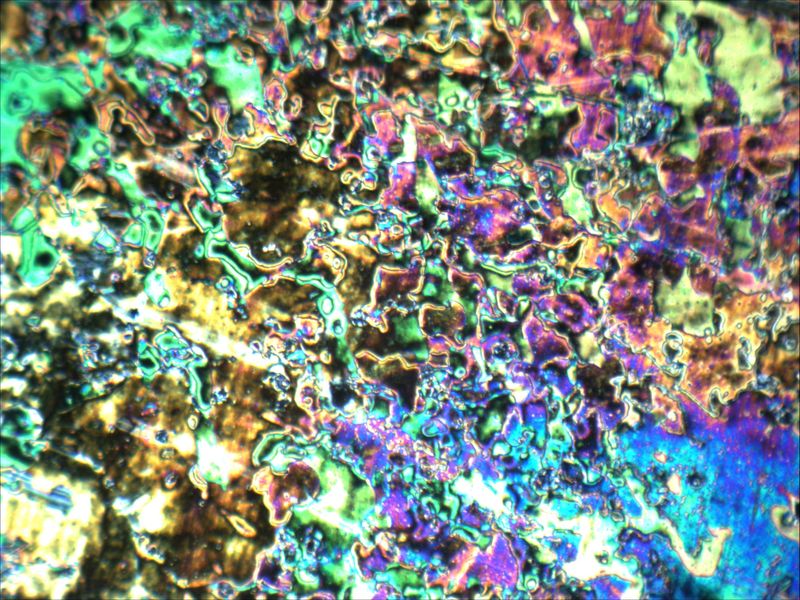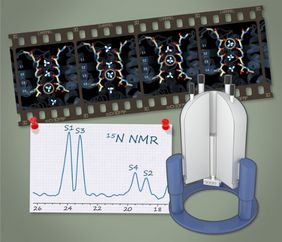Direct Detection of Bound Ammonium Ions in the Selectivity Filter of Ion Channels by Solid-State NMR
Carl Öster, Kumar Tekwani Movellan, Benjamin Goold, Kitty Hendriks, Sascha Lange, Stefan Becker, Bert L. de Groot, Wojciech Kopec, Loren B. Andreas and Adam Lange
The membranes of our cells contain tiny proteins with vital functions: Pore-forming ion channels perforate our cells allowing ions to enter and leave them. The transport of ions across cell membranes is an important function for all living cells. Some of these ion channels are responsible for the transport of sodium (Na+) and potassium ions (K+). Potassium ions are needed for functions such as nerve impulse conduction and heart rate control. Even the smallest changes to these channels can lead to serious complications. In the transport process, ions must pass through a bottleneck, referred to as the selectivity filter. Although the structure of this filter has already been well described, it was previously not possible to observe the actual ions in the channel, at least not under natural conditions. By further developing solid-state NMR spectroscopy, a research team including UniSysCat group leader Adam Lange from the Leibniz-Forschungsinstitut für Molekulare Pharmakologie (FMP) have managed to do just that.
The research team investigated – among other channels - the ion channel NaK which is a bacterial non-selective ion channel that conducts both sodium (Na+) and potassium (K+) ions. Because of its similarity to human ion channels, NaK has become an important model system. However, the detection of Na+ and K+ ions travelling through the ion channel is very challenging: These ions are practically not detectable by NMR spectroscopy since they contain quadrupolar nuclei entailing low signal to noise. In the current study, the research team therefore utilized a trick: Instead of directly detecting K+, they used 15N-labeled ammonium ions (NH4+) as a mimic. NH4+ contains the readily detectable spin ½ nuclei 1H and 15N, and turned out to be a suitable representative of K+. Using high-resolution solid-state NMR spectroscopy, the function of the ion channel could be resolved under near-native conditions. The experimental data were complemented by results from sophisticated molecular dynamics simulations. With this combined approach, the team could elucidate the way ions travel through the selectivity filter.
"Before, we couldn't see the ions - we were blind, so to speak, because there was no suitable technique," explains Carl Öster, first author of the study. "By using the trick with the ammonium and other technical adaptations, we could now see ions directly in the channel for the first time."
For the current study, collaboration partners of Adam Lange around Loren Andreas also carried out measurements on a 1.2 GHz NMR spectrometer in Göttingen. Until now, Göttingen is just one of a few locations worldwide that have such high-resolution equipment. However, there are good news for Berlin as a center of science: The Campus Berlin-Buch will also soon be home to a 1.2 GHz NMR spectrometer. The FMP is currently constructing a dedicated building, which should be ready by the summer. “It will give our site a tremendous boost for the next ten years,” stated Adam Lange. The biophysicist also has another aspect in mind: “This cutting-edge device will allow us to look at even more complex ion channels, and sooner or later this basic research will also prove highly beneficial for pharmacological applications.”
The findings of Öster et al. have been published as an open-access article in JACS: Öster et al., J. Am. Chem. Soc. 2022, 144, 9, 4147–4157, doi.org/10.1021/jacs.1c13247



